Mallikarjuna Temple is considered to be the oldest religious site in Andhra Pradesh. This temple is dedicated to Lord Shiva and is sacred to both Shaktism and Shaivism. It is the only temple where the Shakti Peetha and Jyotirlinga reside under one roof. As per the holy texts Lord Shiva appeared on Amavasya as Arjuna here and Goddess Parvati on Poornima as Mallika. It is believed that praying here offers immense peace of mind, wealth, and fame. The temple houses a Sahasra Linga that is believed to have been commissioned by Rama. The temple has been constructed in Dravidian style, with four gateway gopurams and courtyards. In this article, we will take a look at the history of Mallikarjuna Temple.
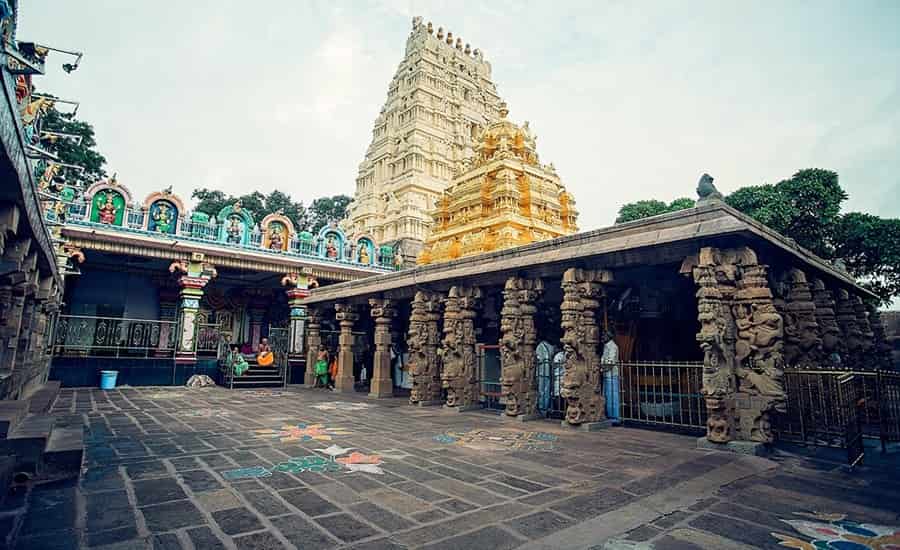
History
The architectural style and early construction of the temple showcase the Chalukya dynasty’s influence. The temple was expanded and renovated later with other dynasties’ arrival. The Satavahanas, South India’s first dynasty have left their undeniable mark in the form of inscriptions at Srisailam. The establishment of the temple was celebrated among the people. After Sri Mallikarjuna Swamy, Satakarni, the Satavahana king, named himself Mallana. In Pulumavi’s Nasik Prashasti of the 2nd Century AD, you can see the earliest reference to Srisailam Hill. Historians even had an argument about tracing the origins of the temple to the rule of Pallavas and the Reddy Kings’ reign extension; Prolay Verma and Anavema Reddy are said to have built roads and mandapas to the temple.
Harihara II, the Vijayanagara dynasty’s king of the fourteenth century, laid the steps to Pathala Ganga. Chandrashekhara, Krishnadevaraya’s minister built the temple’s mandapas. Later Nawabs, Mughals, and then the British took over the administration, and the area of the temple came under them. In 1929, the British established a committee to manage the temple. Later in 1949, the temple was transferred under the Endowments Department’s administration. In the later years, the construction of the Gopuram in the North was authorized by Chatrapathi Shivaji. From the Satavahana dynasty, inscriptional evidence states that the temple has existed since the 2nd century.
Mythology
When Parvati and Shiva decided to find brides for their sons. Shiva got Siddhi (spiritual power) and Buddhi (intellect) married to Ganesha. On his return, Kartikeya was enraged and went away to Mount Krauncha in Palani to stay alone in Kumara Brahmachari’s name. After seeing his father coming to meet him to pacify him, he tried to move to a different place, but at the Devas’ request, stayed close by. The place where Parvati and Shiva stayed came to be known as Srisailam.
As per the Hindu legend, the temple’s presiding deity was worshipped in the form of Linga with jasmine (locally called Mallika in Telugu ), leading to the present name Mallikarjuna.
Legends
Mallikarjuna Temple has been mentioned in various ancient Hindu epics. For instance, it has been said in Agni Purana that penance was performed by Demon King Hiranyakashyap here. He also offered to Lord Mallikarjuna Swamy his prayers. As per Skanda Purana, another sacred Hindu text, in Tretha Yuga Goddess Sita and Lord Rama have visited this site.
While in Dwapara Yuga, it has been said that during their exile Pandava brothers had spent some time at this site and they also offered prayers. Even in Kaliyuga, this temple’s importance has not diminished but significantly increased. Great philosophers and saints Adi Shankara, Siddha Nagarjuna, Veerashaiva Saint Allama Prabhu, Siva Sarani Akka Mahadevi, and others have spent a significant amount of time here, offering prayers and worshipping the Lord.
Behind Mallikarjuna Jyotirlinga there are many legends. As per the legend, once Lord Brahma and Lord Vishnu had a debate over their powers’ superiority. Hence, to sort this out, Shiva made the decision to test them both. With limitless pillars of light, Shiva pierced all three worlds.
After this, Lord Brahma and Lord Vishnu were asked to end their search of the light pillars; each had to find the light’s end in a given direction, either downwards or upward. After they failed to search for the end, Vishnu accepted his defeat while Lord Brahma lied as he said he had found the end. To this, Shiva proclaimed that Vishnu would be worshipped through all the yugas by devotees while Brahma wouldn’t be remembered the same way.
According to another legend behind the temple of Sri Mallikarjuna Swamy, Lord Shiva appeared at three places as Shivalingam, one of which is Srisailam, while the other two places are Bhimeswara/Draksharamam and Kaleshwaram.
According to one more legend, Silada Maharshi’s son, Parvatha had offered prayers to Shiva for atonement. Lord Shiva was pleased by his prayers and granted his wish. After this Parvatha took the hill’s shape named Sri Parvatha, while Shiva stayed.

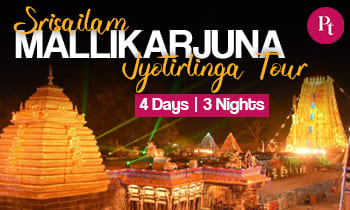


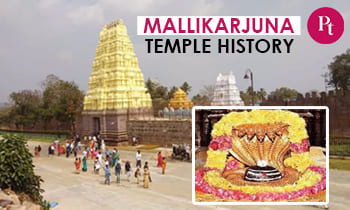
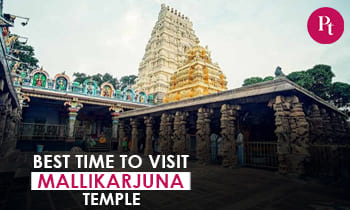
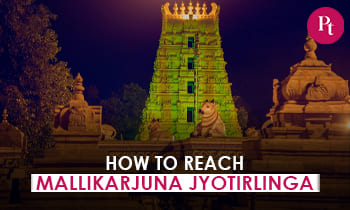
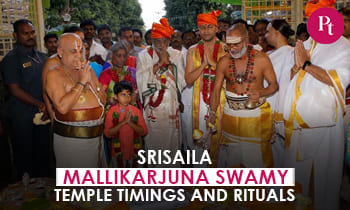
 Call
Call WhatsApp
WhatsApp Enquiry
Enquiry